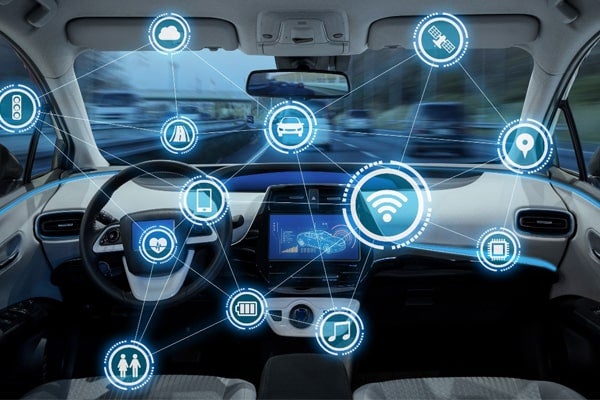My friends and colleagues know I like to get my hands dirty with code and with the nitty gritty of building open source businesses and managing open source portfolios. Only a few long-time buddies remember that in high school and college these same code-stained hands also boasted grease tattoos from delving under the hood of my car and the vehicles of my parents and friends – lots of brake jobs, tune-ups, u-joint replacements and more exotic work on carbs, electrics, and exhaust systems. In those days, dashboards were not yet smart, ignitions were only beginning to be electronic, and autonomous vehicles were the stuff of SciFi novels.
Today, it barely makes sense to talk about automotive “mechanics.” Modern vehicles are really software platforms, hosting 80-100 million lines of code. Cars can contain over a dozen Linux-capable computers and up to one hundred other electronic control units, streamlining everything from anti-lock braking to navigation to issuing maintenance requests to avoiding accidents in heavy traffic.
Open source plays an important and ever-increasing role in vehicle systems. GENIVI and the Linux Foundation’s Automotive Grade Linux enjoy increasing adoption as standard automotive applications platforms, and large swathes of middleware and other in-vehicle software components are built from open source. With the advent of Advanced Driver Assistance Systems (ADAS) and emerging autonomous vehicles, software content continues to grow, and with that increase comes concomitant amounts of open source software.
In our webinar, Jeff Luszcz and I highlighted the scope of software management challenges faced by today’s automotive ecosystem. Automakers (OEMs) source vehicle components and subsystems from dozens of suppliers (Tier I’s) who in turn look upstream to a range of hardware and software vendors (Tier II’s) and also to thousands of open source community projects. Assuring the quality of integrated software components, understanding the provenance and licensing of the supplied code, and guaranteeing the safety and security of resulting vehicles is perhaps the greatest challenge faced by the automotive industry today.
Automotive OEMs and their Tier I/II ecosystem partners share the same concerns as other tech companies, and of enterprise IT organizations as well. They worry about:
- OSS integration while retaining rights to company intellectual property
- Collaboration with upstream developer communities to meet product needs and minimizing “technical” debt from open source project code
- Managing millions of lines of open source efficiently and cost effectively
- Creating secure vehicles, platforms and applications by discovering, managing and remediating vulnerabilities in all types of software stacks
- Differentiating the driver experience through value-added software and support infrastructure in vehicles, on mobile devices, and in the cloud
Whatever your company’s role in automotive – supplier, integrator or OEM—or your individual focus – developer, manager, security, QA, legal or business strategist—Open Source Sense and Revenera have the experience and expertise to help you tune-up your ROI from using and deploying open source, and making sure your open source management machine is firing on all cylinders!


